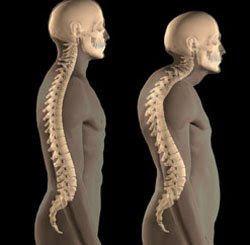
Girls who are exercising are getting a bone mass which should reduce the chances for the emergence of osteoporosis in older age.
The biennial survey of Canadian scientists from the University of British Columbia have had 34 ten-year-old girl who regularly exercised three times a week in specific program and 46 girls who did not exercised. With girls who were exercising by the program applicable to each primary school the increase of the quantity of minerals in the bones was five percent higher. Scientists estimate that so gained advantage in increasing the level of minerals in the bones in childhood is equivalent to the postponed time of three to five years of starting of a process of losing bone mass after menopause. Osteoporosis is related to loss of bone mass that often accompanies aging, and because of that the bones become more fragile and breakable. Due to the reduced production of estrogen hormones after menopause osteoporosis affects more women than men. Exercise is recognized as one of the most important factors for the development of the bones - the research showed that babies who were moving more in the womb; have stronger bones.
The biennial survey of Canadian scientists from the University of British Columbia have had 34 ten-year-old girl who regularly exercised three times a week in specific program and 46 girls who did not exercised. With girls who were exercising by the program applicable to each primary school the increase of the quantity of minerals in the bones was five percent higher. Scientists estimate that so gained advantage in increasing the level of minerals in the bones in childhood is equivalent to the postponed time of three to five years of starting of a process of losing bone mass after menopause. Osteoporosis is related to loss of bone mass that often accompanies aging, and because of that the bones become more fragile and breakable. Due to the reduced production of estrogen hormones after menopause osteoporosis affects more women than men. Exercise is recognized as one of the most important factors for the development of the bones - the research showed that babies who were moving more in the womb; have stronger bones.



